- Mike Barnett
- http://iuse.bc.edu
- Professor
- Interdisciplinary Approaches to Teaching Computational Environmental Science
- http://iuse.bc.edu/
- Boston College
- Yihong Cheng
- Graduate Student
- Interdisciplinary Approaches to Teaching Computational Environmental Science
- http://iuse.bc.edu/
- Boston College
- Jackie DeLisi
- Senior Research Scientist
- Interdisciplinary Approaches to Teaching Computational Environmental Science
- http://iuse.bc.edu/
- Education Development Center (EDC)
- Lila Finch
- Graduate Student
- Interdisciplinary Approaches to Teaching Computational Environmental Science
- http://iuse.bc.edu/
- University of Colorado Boulder
- David Jackson
- Graduate Student
- Interdisciplinary Approaches to Teaching Computational Environmental Science
- http://iuse.bc.edu/
- Boston College, Waltham Public Schools
- Celeste Moreno
- Graduate Student
- Interdisciplinary Approaches to Teaching Computational Environmental Science
- http://iuse.bc.edu/
- Rajeev Rupani
- Senior Research Associate
- Interdisciplinary Approaches to Teaching Computational Environmental Science
- http://iuse.bc.edu/
- Boston College
- Helen Zhang
- Senior Research Associate
- Interdisciplinary Approaches to Teaching Computational Environmental Science
- http://iuse.bc.edu/
- Boston College
Public Discussion
Continue the discussion of this presentation on the Multiplex. Go to Multiplex








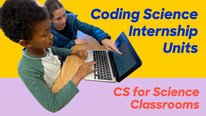
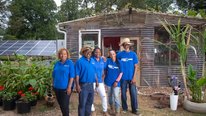
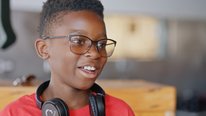
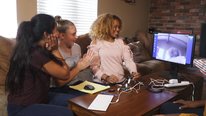
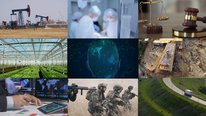
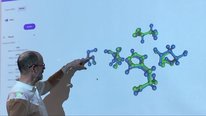
Mike Barnett
Professor of Science Education and Technology
In this project we working with teachers and youth to design trans-disciplinary learning experiences where youth are applying concepts from physics, chemistry, biology, and computer science to better understand how to do scientific research. We have created a suite a micro-python libraries and a suite of micro:bit programs using makecode that teachers and youth can use to program and create automated greenhouses. We are specifically targeting teachers who teach in schools with large percentages of under-represented groups in their classrooms. We are also working with teacher who have little or no experience in coding and developing support materials to help them to better understand the role that coding plays in the conduct of scientific research. As a part of our work we also work with 80 youth from Boston Public Schools who attend the college-bound program at Boston College where they attend both an academic year program on Saturdays and a summer program.
This project we have focused on working with youth and embedded in the materials opportunities for youth to see that they need to have a place at the computational science table given how easy it is for programmers to build into their algorithms biases that can negatively impact low income communities and people of color. To that end, despite the tremendous value of engaging youth in a truly trans-disciplinary project (and that they can do the same work as graduate students), we are still trying to understand how to best frame the needed conversations around justice-centered computation as it pertains this specific work.
Michael Haney
Administrator, Educator
This is a very nice project full of opportunities to learn content and methods critical to science yet frequently left out. It is truly interdisciplinary and brings in key elements of computational science through ingenious tools that allow student to explore, control and measure a microenvironment in a desktop greenhouse. Students will learn to structure experiments and collect data as well as represent and analyze that data. Secondary school students really need far more hands on research opportunities like these if they are going to understand science as a process. The video, your posting and the project summary leave me enthusiastic but filled with questions.
Learning outcomes. What are the specific outcome knowledge and skills that you are targeting in this project? What tools and methods are you using to determine what students have learned (short and/or long term)?
There are two distinct groups, those you target through teachers working in underrepresented communities and the 80 students in the college bound program? Is the only difference in setting? Are you trying the same materials on both groups? Is there something to be learned from the differences?
Mike Barnett
Professor of Science Education and Technology
There are two groups of students. The first is funded through an ITEST award that is part of a larger pathway program for youth who start with us as 7th graders. This work they engage in when they are in 9th - 11th grade. This one is out-of-school. There are definitely strengths to both as well as drawbacks. The thing that we can do in the OST program is give students a lot more freedom to explore, play, and experiment without the need for a deadline to move on to the next subject. So there we can learn what really gets youth excited and what pathways they want to move down. The in-school version is where we have been working with teachers who have none or limited computer programming experience and there the youth often pick up the coding quickly. There are two issues there that are of interest (1) how can we support teachers in blending computational science into their science teaching. In many cases teachers tend to want to keep them separate in that are either coding or they are doing science. So the design challenge is how to best to support teachers so they can help their students see that that coding is basically a tool that scientists use to conduct their work.
What is also interesting is observing how the teachers implement the project (this is true across both the in-school and out-of-school components) is that teachers often approach their teaching as teaching for experimentation or teaching to learn the coding/physical computing. The outcomes for the youth are different. The youth who have teachers that focus on the science have a higher self-efficacy and can better explain coding as a part of science but they are not as proficient at coding. For the teachers that focus on the teaching of the coding they are more confiden at their coding skills but have a more difficult time articulating how coding and science are related to each other.
We have been creating visual maps for the teachers and students to hep them see and make the connections and we simplified the pedagogical approach where students are working in groups and taking a deep dive into 1-2 variables and understanding how to code the physical for just those to variables and compare and contrast those variables to their team-mates.
Another issue is troubleshooting and making mistakes. There are so little time for students to make mistakes and really learn from them in a classroom setting compared to the OST setting. We have been looking at interest, self-efficacy, and student thinking around the role of failure in the science research process. What we see in the OST program is that students are more willing to try new things and such have a different relationsihp with failure. So the design challenge for the in school work is looking at ways to create opportuities for productive failure.
Sheikh Ahmad Shah
Michael Haney
Administrator, Educator
Thank you for what I think are very insightful comments on the differences between the approaches of teachers and students. Also, the less constrained OST program would seem to lead to a deeper understanding, but that investigation really isn't part of your research. Still, the observations are on the mark.
Jonathan Margolin
Principal Researcher
Hi Mike, thanks for elaborating on the project. I would love to hear more about your research goals--what specific questions are you trying to answer through this project?
Mike Barnett
Professor of Science Education and Technology
There are number (and Dave Jackson who is working on this project his Ph.D work) and Paul Xu who finished his dissertation on this work and Helen Zhang is our lead research team member on the STEM learning side with David Blustein leading the STEM career development side. So we are looking at trying to understanding:
1. Through their participation in the work (both in and out-school programs) how does youth intentionalitity toward STEM and STEM careers shift and change. Intentionality ecompasses interest, efficacy, and sense of purpose.
2. How and in what ways do youth and teachers operationalize and internalize the relationship between coding and science. Do they see the practices and process of science and computational science the same or different, and how does that influence therir learning/teaching outcomes.
David Jackson
Rebecca Vieyra
Project Manager
Dear Mike and Team,
This looks like a true STEM project that targets not only the major subjects, but each of the disciplines as well (physics, life science, chemistry, computer science, etc.), so this is quite impressive!
I am curious to know how you are assessing learning outcomes, as well as the balance in instruction. As a prior physics teacher, I sometimes have worried that integrated STEM can help students get the "big picture" and cross-cutting ideas, but sometimes leaves students with a fragmented understanding of the disciplines. How do teachers and students react to the wide variety of topics that appear to be presented here? (Have you seen any of these teachers -- who might be integrated STEM teachers or trained classically in one of the STEM disciplines -- struggle with the idea of disciplinary boundaries?)
Mike Barnett
Professor of Science Education and Technology
Yes, that is very difficult to balance and it in part depends on what the teacher would like to do. We have had teachers who were fortunate that they were allowed by their schools to design an entire semester long course around the idea of learning the tools and taking a deeper dive into the research work. In those classes the focus is on undertanding how youth think about research and how they can be supported through that process. For other teachers the focus is much more on reviewing the basics of plant science and using the coding/physical computing aspects to serve as the motivational hook and tool to review the plant science. In the materials we are making quick connections between the plant science, coding, and other disciplines... i.e. an easy one is the distance squared rule as youth can test their physical setup and codes to see if they have things right.
All of our teachers that we have worked have mostly been content area experts i.e. biology, etc... the middle school teachers do teach different subjects (8th grade) and the district asked us there to focus on more physical science concepts as a part of the project as the youth take physics in 9th grade.
In terms of looking at learning we are mostly focused on the computational science aspects of the project (i.e. how can the youth design a algorithm that automates an aspect of their system so they can do their reserach project... i.e. they want the temperature to stay within a cetain range). So how would you build and write a program that enables that to happen? We are using surveys and interviews, and classroom observations, and interviews with teachers.
We are trying to take a deep dive across disciplines as neither the students or teachers can handle that much info so we look at the core ideas around plants and then draw those connections to the other disciplines and make them explicit. That approach keeps it manageable conceptually and supports studnets in realizing that what they do in chemistry class could actually be useful in biology class.
Rebecca Vieyra
Project Manager
Dear Mike and Team,
Thanks for the frank response! I'm glad to hear that teachers have been able to find the right emphasis in the project to meet their needs. It's also nice to hear that some teachers are able to take a much more "research methods" approach.
Given this, have you noted anything about the type of teacher that is willing to embrace this project and/or the circumstances under which they teach, versus those who don't? What I mean is, what kinds of teachers and schools do you feel are open to accepting these kinds of projects? (And what suggestions do you have for working with those teacher and schools that might not be as open?)
Sara Hamerla
This was a very engaging project. As a public school district, it is difficult to find the resources to create a project like this alone. We needed the expertise of the university partner to envision this complex design. Many of the students who participated are multilingual and might be first generation college students in the future. I was able to visit the classrooms and see the high level of engagement first hand. It definitely made a difference in these students' lives and will encourage them to choose a career in STEM.
David Jackson
Sheikh Ahmad Shah
Sheikh Ahmad Shah
This project is unique in that sense that we usually don't align growing plants with coding. Most students are typically introduced to coding where they need to solve mathematical problems. But here, they can see how they can see the impact of their coding in a real-life setting. And such experience of combining biology and computer science would most certainly create a deep and long-lasting impression on them.
David Jackson
Michael I. Swart
"How and in what ways do youth and teachers operationalize and internalize the relationship between coding and science."
Is there a theoretical framework that undergirds this work? What constructs encompass how youth and teachers operationalize and internalize? Are these local to this project? Do you see evidence of generalizability and transfer in their conceptions?
There are a number of great curricular components to this work. Is your lab interested in understanding the contributions of the plants? The coding? The tech components?
David Jackson
Graduate Student
Hi Michael,
Broadly speaking, our lab is focused on (re-)engaging students in STEM learning, especially around issues like food (in)security, (in)equitable access to educational and career opportunities, and culturally sustaining pedagogies (after Paris). Mike mentioned self-efficacy [theory], as we build on not only seminal works by Bandura, but also more recent extensions by Schunk and DiBenedetto (for example) -- especially the more social orientations of "self"-efficacy.
Given our partnerships with Massachusetts K-12 public schools, we are to some extent beholden to what I'll put at the level of "constructs", namely science and engineering practices related to NGSS, computational practices aligned with K12CS, and also the "Dimension of Engagement, Equity, and Diversity" proposed by Rodriguez. Given our design-based methodologies, we do seek to infer design conjectures (building from Sandoval, for one), which inform our iterations across multiple cities/communities within Massachusetts. We've seen some transferability across different schools, grades, in-school/out-of-school, etc., but don't yet have much longitudinal data (if that's one thing you're getting at).
As for you final paragraph, yes-yes-yes -- consistent with the aforementioned culturally sustaining pedagogies, we take an asset-based approach and build from youths' existing background/practices/repertoires, which vary in there resonance with plants, coding, tech, collaboration, language, cooking, careers, gardening, and so on.
All this probably sounds like a lot, and it is! :) But it's not just name-dropping or buzzwords, as we're fortunate to have the personnel to collaborate around these various concepts, constructs, design conjectures, and more, through our broader team of professors, undergrads, master's students, doc students, post docs, lab manager, practitioner-partners, and, of course youth. Recently we have tended to be more active in conferences than journals (and that's a whole other topic), but we are currently working on (re-)joining scholarly conversations in both practitioner- and researcher-oriented publications... and of course, outreach like local events and national events (including this one!).
Best regards,
Dave
Devon Russell
Awesome engaging project! Will you be making the curriculum or possibly a kit available for educators to access?
Mike Barnett
Professor of Science Education and Technology
Yep, we are working on that. We have started to put together the instructional videos (in the extra docs above) and currently working on the 3D printed parts for holding sensors and the like. In the program book attached to the video are all the materials that are needed to build a full greenhouse setup and we were just working on an instructional video to make the transparent soil as we now have that in a state where all you need is a microwave to heat the solutions. The virus event interrupted that video but once back to campus we will get that finished up.
Eric Hamilton
Mike, If you have a mailing list for your kit or curriculum, please add us to it. Thank you. eric.hamilton@pepperdine.edu
Devon Russell
That is great! I will definitely be forwarding this on. Is https://growthings.readthedocs.io/en/latest/index.html where you will be be able to find everything in the future?
Thanks
Mike Barnett
Professor of Science Education and Technology
That is the micro-python site. We are creating a separate site that will have both the micro-python and the micro:bit work. Our wonderful colleagues at UC-Boulder are also working on a site with specific make-code blocks and the documentation around how to stream the data to google sheets. Not quite sure yet what the url of that site will be yet but we will post it up.
Karen North
This is great! Wish my grandchildren's teachers would do this. And parents would scale the research in this new world of homeschooling.